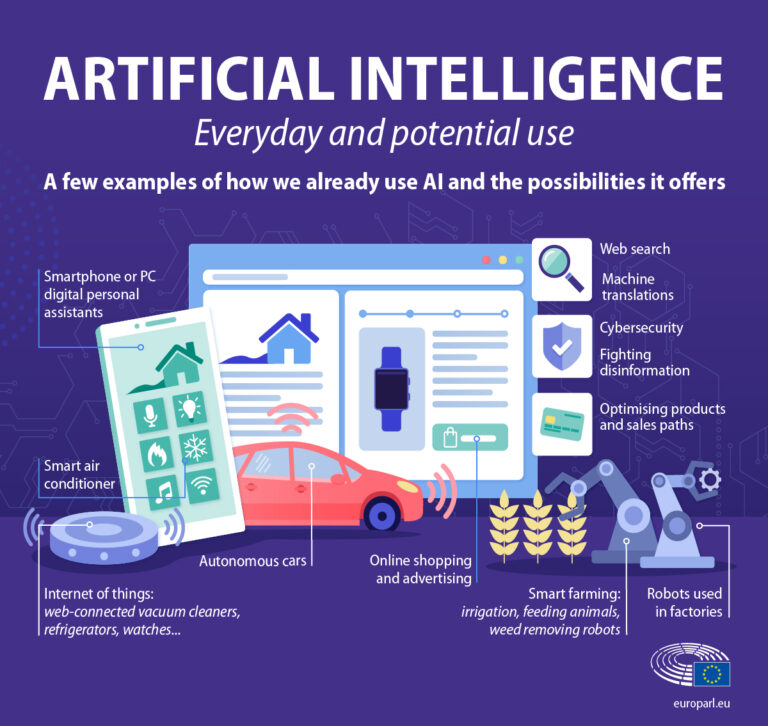How Machine Learning Is Used In Image Recognition?
Machine learning is a type of artificial intelligence that enables computers to learn from data without being explicitly programmed. Image recognition is a process in which algorithms use the visual data from an image to identify objects, people, places, or actions. Machine learning is used in image recognition to identify patterns in large sets of image data, detect anomalies, and make predictions. This technology can be used in a variety of applications, such as facial recognition, medical imaging, and autonomous driving. With machine learning, computers can identify objects in an image more accurately and quickly than humans can. Machine learning is also used to improve the accuracy of image recognition algorithms by training them on large datasets and using deep learning. This technology has the potential to revolutionize the way we use images in the future.
What is Machine Learning?
Machine Learning is a field of Artificial Intelligence that enables computers to learn from data without being explicitly programmed. It automates the analytical process by using algorithms to find patterns in data, identify correlations, and draw insights. This enables computers to make decisions and predictions based on that data without needing to be explicitly told how to do so. Machine Learning is used in a variety of applications, such as recognizing objects in images, predicting customer behavior, and providing recommendations. It is a powerful tool for businesses, allowing them to have better insights about their customers and make more informed decisions.
How Machine Learning is Applied to Image Recognition
Image recognition is a process of extracting meaningful information from digital images or videos. It is a field of machine learning that has revolutionized the way we interact with computers. By utilizing algorithms and statistical models, machine learning can be applied to identify objects, locations, or events within an image or video. Image recognition has many applications, including facial recognition, object detection, and object tracking. For example, facial recognition can be used to detect a person in an image, object detection can be used to identify an object in an image, and object tracking can be used to track the movement of an object in an image. Machine learning has allowed us to analyze images and videos in ways that weren’t possible before, and its applications are only continuing to grow.
Types of Machine Learning Algorithms for Image Recognition
Image recognition is a rapidly evolving field of machine learning that uses algorithms to process and identify images. It has a wide range of applications in various industries, such as security, self-driving cars, medical diagnostics, and more. There are various types of machine learning algorithms used for image recognition, each with their own strengths and weaknesses. For example, convolutional neural networks are well-suited for recognizing patterns in images, while support vector machines can handle more complex tasks. Other algorithms, such as k-means clustering and decision trees, can be used to create models that can identify objects in images. With advances in artificial intelligence, image recognition algorithms are becoming increasingly accurate and reliable. By understanding the various types of machine learning algorithms used for image recognition, businesses can leverage the power of AI to unlock new opportunities and insights.
Challenges of Implementing Machine Learning for Image Recognition
Implementing Machine Learning for Image Recognition is no easy task. It requires an understanding of deep learning algorithms, image recognition techniques, and the ability to design and develop an effective system. Challenges such as input data quality, processing power, and algorithmic accuracy can often cause difficulties for organizations looking to implement this technology. Additionally, data privacy and security concerns can often be an obstacle when deploying machine learning solutions. However, with the right expertise and dedication, organizations can overcome these challenges and take advantage of the power of machine learning for image recognition.
Advantages of Using Machine Learning for Image Recognition
Image recognition is a rapidly evolving technology, and machine learning is playing a major role in its development. Machine learning can be used to identify objects, recognize facial features, and even identify handwriting. This technology has countless applications, such as facial recognition to secure buildings, AI-powered image search engines, and even medical image recognition to diagnose diseases. Machine learning for image recognition provides advantages such as increased accuracy, improved scalability, and enhanced security. By leveraging the power of machine learning algorithms, image recognition systems can be trained to recognize patterns and identify objects with unprecedented accuracy. Additionally, machine learning-based image recognition can be scaled up or down to accommodate different data sets. Finally, machine learning-based image recognition can be used to secure information and prevent unauthorized access to sensitive data. Overall, machine learning for image recognition provides numerous benefits and is becoming an increasingly important technology for organizations across all industries.
Examples of Machine Learning for Image Recognition
Machine Learning for Image Recognition is an exciting and rapidly-growing area of Artificial Intelligence (AI). It involves the use of sophisticated algorithms to enable computers to interpret and identify patterns in digital images. In particular, Machine Learning for Image Recognition can be used to identify objects in images or videos, detect facial expressions, and even classify images into specific categories. By using labelled data, Machine Learning algorithms can learn to recognize patterns in images and then classify them accordingly. This not only allows for more accurate image recognition but also provides insights into how different images can be used in different contexts. Examples of Machine Learning for Image Recognition include facial recognition technology, object detection algorithms, and automatic image classification systems. As the capabilities of Machine Learning for Image Recognition continue to grow, the potential applications of this technology are becoming increasingly exciting.
FAQs About the How Machine Learning Is Used In Image Recognition?
Q1. What kind of images can be recognized by machine learning for image recognition?
A1. Machine learning for image recognition can be used to recognize objects, faces, and scenes in photos and videos, as well as for facial recognition and object detection.
Q2. How does machine learning for image recognition work?
A2. Machine learning algorithms are trained to recognize patterns in digital images. This is done by using labeled images, which have been labeled by humans, as a training set for the algorithm to learn from. The algorithm is then used to identify patterns in other unseen images.
Q3. Is there a limit to the accuracy of machine learning for image recognition?
A3. The accuracy of machine learning for image recognition depends on the quality of the training data and the accuracy of the algorithm itself. In general, the more data and the better algorithm, the higher the accuracy of the image recognition process.
Conclusion
In conclusion, Machine Learning has revolutionized the field of image recognition. By leveraging powerful algorithms and datasets, machine learning is able to detect and classify images with incredible accuracy. This technology has been widely applied in fields such as medical imaging, facial recognition, and autonomous vehicles. With the vast potential for machine learning, it is likely that image recognition will continue to be a major area of research and development in the coming years.




